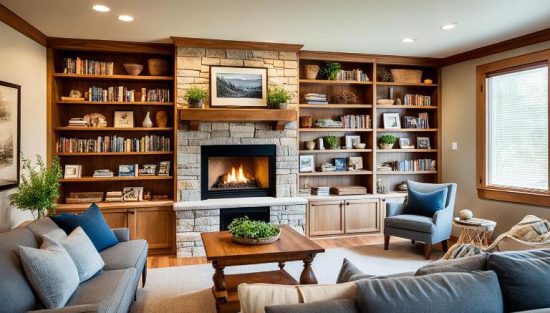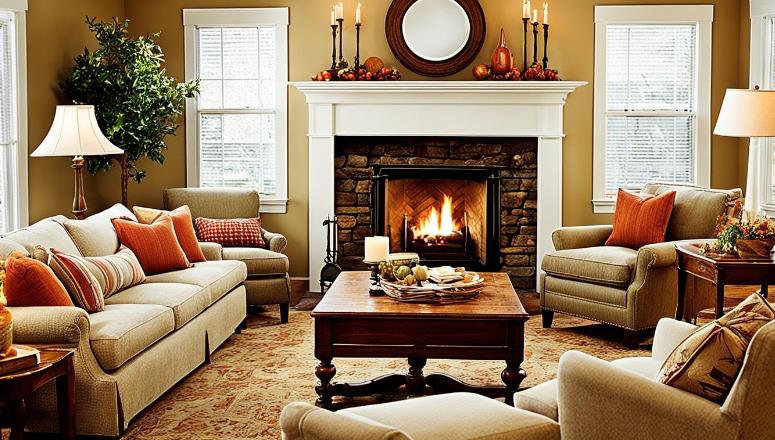In the realm of cozy and functional living spaces, the concept of a keeping room emerges as a unique and inviting feature, particularly rooted in colonial history. Unlike the more conventional living or family rooms, a keeping room serves a distinct purpose beyond mere relaxation—it’s a space designed for companionship and warmth, often adjacent to the kitchen to keep the cook company. With its historical significance and modern-day charm, understanding the essence of a keeping room offers insights into creating a welcoming and functional area within your home. So let us get to know more about what is a keeping room and specialties.
The Origin of the Term ‘Keeping Room’
The term ‘keeping room’ originated in the early 1700s during the American Colonial era, describing rooms adjacent to kitchens valued for their functionality and warmth. They were essential in smaller or rural homes where the kitchen was often the sole heated space. These rooms served multiple purposes, including reading, writing, sewing, and socializing, and were centered around a large hearth for cooking and warmth. By the 19th century, the rise of formal reception rooms led to a decline in keeping room use, but they remain historically significant for their insight into colonial domestic life.
What is a Keeping Room?
Furnishing a keeping room involves prioritizing comfort and practicality. Traditionally, keeping rooms had softer and more comfortable furniture such as sofas or cushioned chairs. They often featured storage options like cupboards for sewing supplies, books, and games. Some even had desks for writing letters or daybeds for napping.
Today, modern keeping rooms can be personalized according to the needs of the individuals using the space. Comfortable seating continues to be important, and adding different textures like super soft rugs, plush pillows, and natural woven furniture can enhance the cozy atmosphere. The goal is to create a warm and inviting space that is in close proximity to the kitchen.

Furnishing a Keeping Room: Elements and Considerations
- Comfortable Seating: Sofas, armchairs, and loveseats are common in keeping rooms, providing ample seating for relaxation and socializing.
- Storage Options: Cupboards, bookcases, and storage benches help keep the room organized and provide space for storing items like books, games, and extra blankets.
- Workspaces: Desks or tables can be included for tasks like writing, crafts, or using laptops, adding functionality to the room.
- Cozy Textures: Super soft rugs, plush pillows, and throws add warmth and comfort, enhancing the inviting atmosphere of the keeping room.
- Proximity to Kitchen: Keeping rooms are ideally located near the kitchen, allowing for easy access to snacks and drinks while entertaining or relaxing.
- Flexibility: Furniture that can be easily rearranged or repurposed, such as modular sofas or nesting tables, can help maximize space and adapt to different activities.
How to Utilize a Keeping Room—or Its Best Alternatives
Keeping rooms offer a versatile space that can be used for various purposes. They can serve as a homework area for children, a hangout spot for teenagers, or a cozy retreat for adults to relax and socialize. If your home doesn’t have a designated keeping room, you can create a similar space in your kitchen by adding seating and creating a comfortable atmosphere. This allows you to maximize space and add convenience and comfort to your home.
Another alternative to a traditional keeping room is a sunroom or a screened-in porch, which can provide a similar cozy and comfortable space with the added benefit of natural light and outdoor views. Alternatively, you can convert a spare bedroom into a multi-functional space by adding seating, a desk, and other elements to make it a cozy retreat for various activities. Finally, consider incorporating flexible furniture, such as sleeper sofas or folding tables, to make the most of a smaller space and easily transform it for different uses.
Keeping Rooms vs. Family Rooms vs. Living Rooms
Keeping rooms, family rooms, and living rooms each serve distinct purposes in a home. Keeping rooms, located near the kitchen, offer a cozy space for intimate gatherings with easy access to snacks and conversation. Family rooms, typically at the back of the house, are more casual and often used for activities like movie nights. Living rooms, usually at the front, are formal spaces for entertaining guests. Each room type has its own atmosphere and intended use, with keeping rooms emphasizing coziness, family rooms prioritizing casual relaxation, and living rooms focusing on formal elegance and style.
How to Decorate a Keeping Room?

For decorating ideas for keeping room, follow the below tips:
- Choose comfortable furniture pieces such as sofas or cushioned chairs for relaxation and socialization.
- Incorporate soft pillows and throw blankets into the seating area for extra comfort.
- Use warm colors like browns, reds, and creams, along with textured elements such as rugs and baskets, to create a cozy ambiance.
- Consider adding a fireplace for both visual appeal and extra warmth during colder months.
- If a traditional fireplace isn’t possible, opt for alternative heating options like HVAC systems or electric fireplaces.
- Install storage solutions like cabinets or hutches to keep the room organized and clutter-free.
FAQs on Keeping room
Why do they call it a keeping room?
The name “keeping room” comes from the historical use of the space as a place where the heat from the kitchen’s fireplace could keep food warm. It was also a room where the family could gather to keep warm during cold weather, as many early American homes lacked central heating.
What is another name for a keeping room?
A keeping room is traditionally found in Southern homes and serves as a multi-functional space for relaxing, eating, and gathering, often featuring a fireplace and comfortable seating. Its proximity to the kitchen makes it a convenient spot for family members to gather while meals are being prepared. The concept of a keeping room dates back to colonial times when kitchens were separate from the main house, and the keeping room served as a warm place for the family to gather in cold weather.
What furniture should I include in a keeping room?
In a keeping room, it’s also a good idea to include storage solutions such as bookcases or cabinets to keep the room organized. Consider adding a fireplace for a cozy focal point, especially if the room is meant for relaxation and gathering. Lighting is key, so include a mix of overhead lighting, floor lamps, and table lamps to create a warm and inviting atmosphere. Lastly, don’t forget to add personal touches like artwork, rugs, and throw pillows to make the room feel like home.

